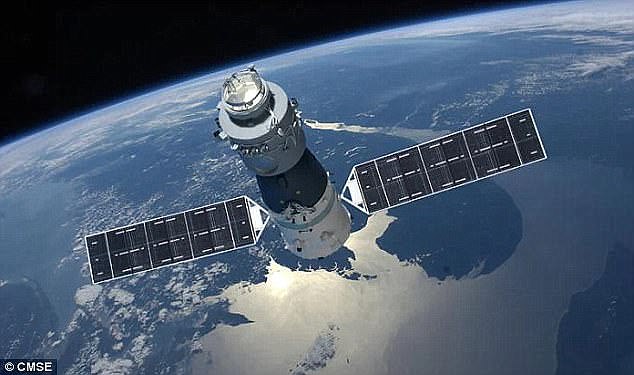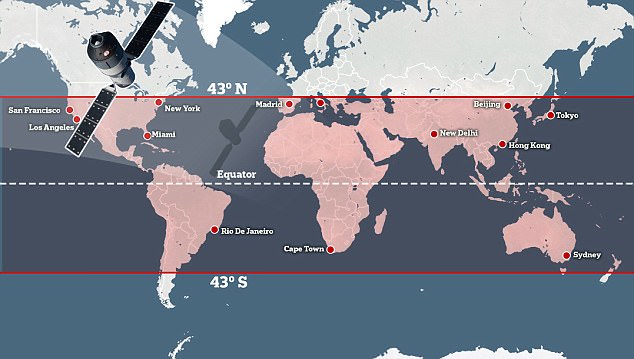
China’s first space station, Tiangong-1, has been out of control since September 2016, and now experts have predicted when and where it will come crashing back down to Earth.
The European Space Agency (ESA) predicts that the 8.5-tonne spacecraft will make an ‘uncontrolled re-entry’ to our planet between January and March 2018.
ESA has announced that it is hosting an international campaign to monitor the re-entry of Tiangong-1 early next year.
The Tiangong-1 spacecraft launched in 2011, with the aim of using the craft to set up a larger space station.
But in September 2016, Chinese officials confirmed that they had lost control of the spacecraft.
The craft is now at about 300 kilometres (186 miles) altitude in an orbit that is expected to decay sometime between January and March 2018, when it will make an uncontrolled re-entry.

Holger Krag, head of ESA’s Space Debris Office, said: ‘Owing to the geometry of the station’s orbit, we can already exclude the possibility that any fragments will fall over any spot further north than 43°N or further south than 43°S.
‘This means that re-entry may take place over any spot on Earth between these latitudes, which includes several European countries, for example.
‘The date, time and geographic footprint of the re-entry can only be predicted with large uncertainties.
‘Even shortly before re-entry, only a very large time and geographical window can be estimated.’
Much of the spacecraft is expected to burn up in the atmosphere upon re-entry.
But owing to the station’s mass and construction materials, there is a possibility that some portions of it will survive and reach the surface.
In the history of spaceflight, no casualties due to falling space debris have ever been confirmed.
ESA plans to conduct an international expert workshop on 28 February to focus on re-entry predictions, in the hopes of anticipating Tiangong’s return to Earth.
Source: Daily mail




